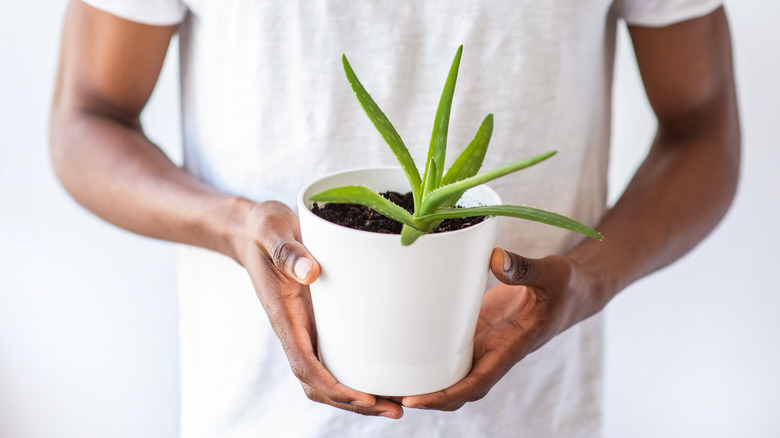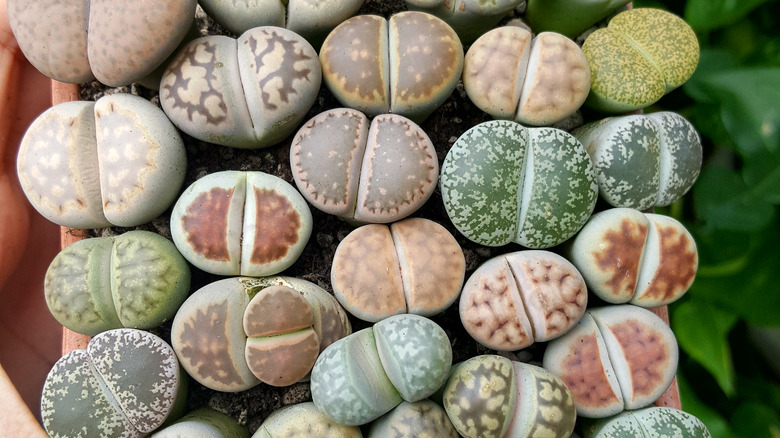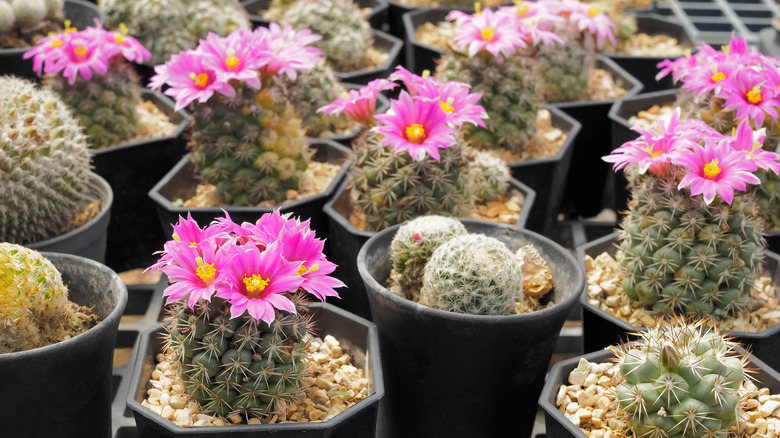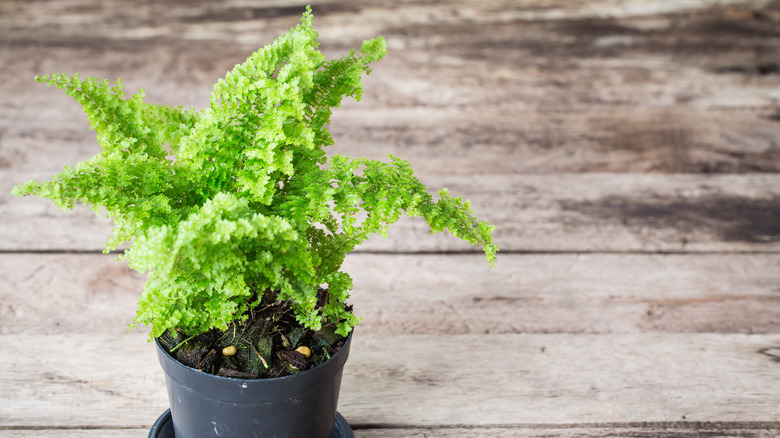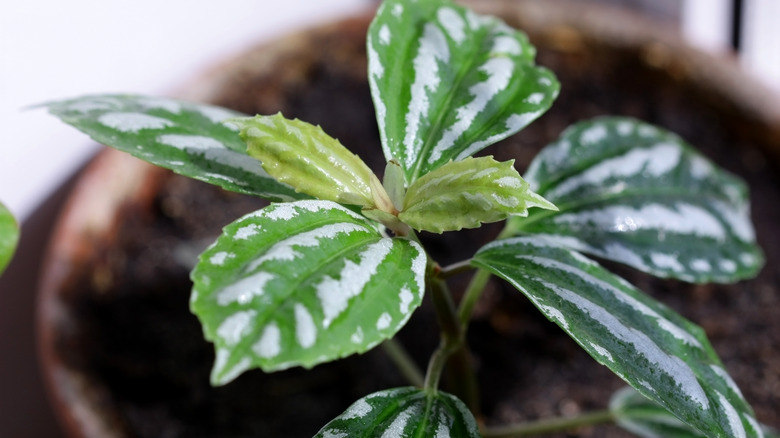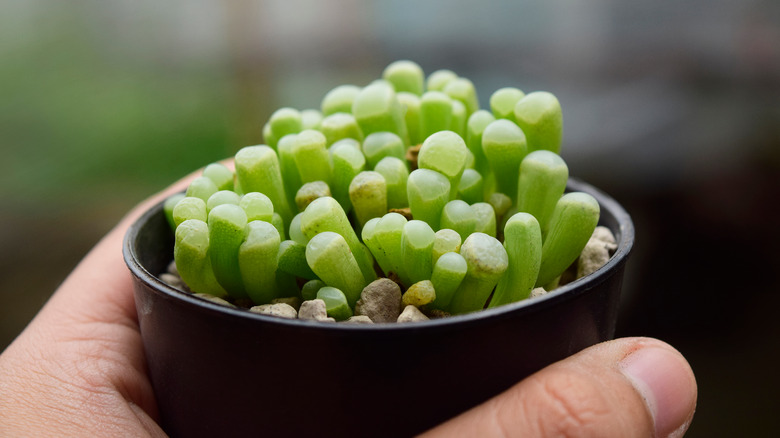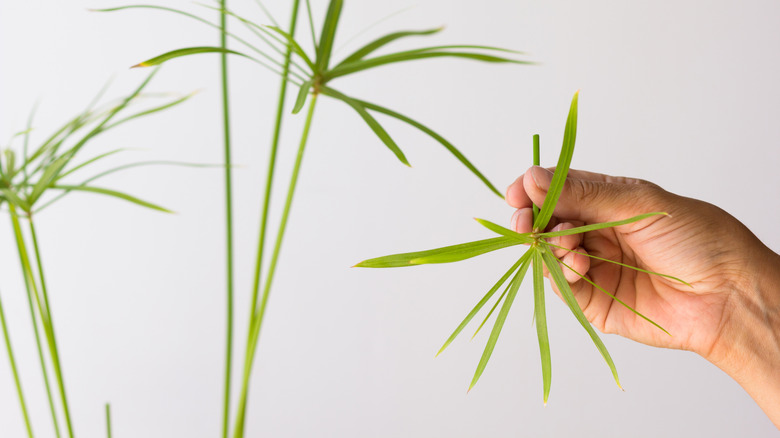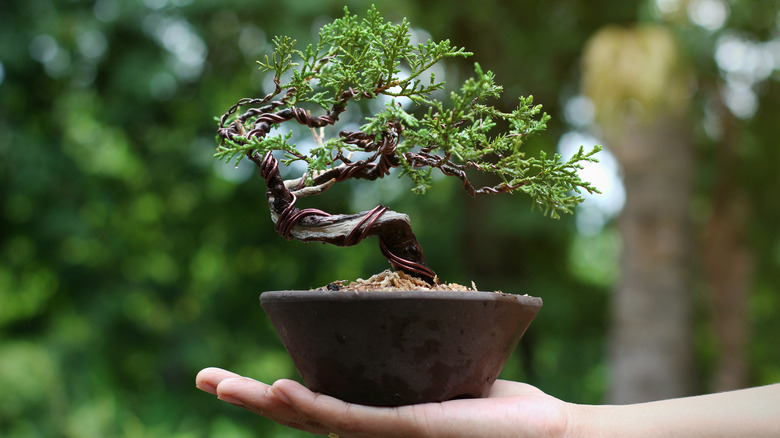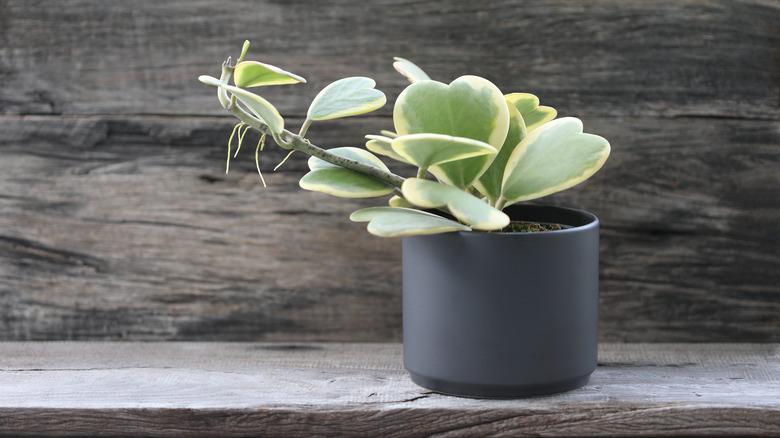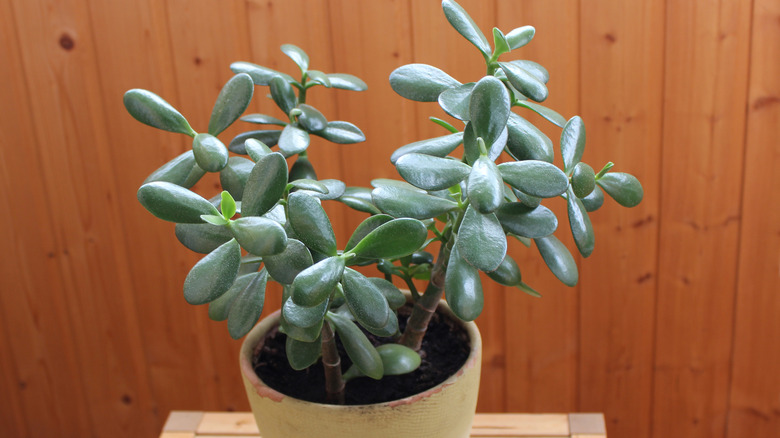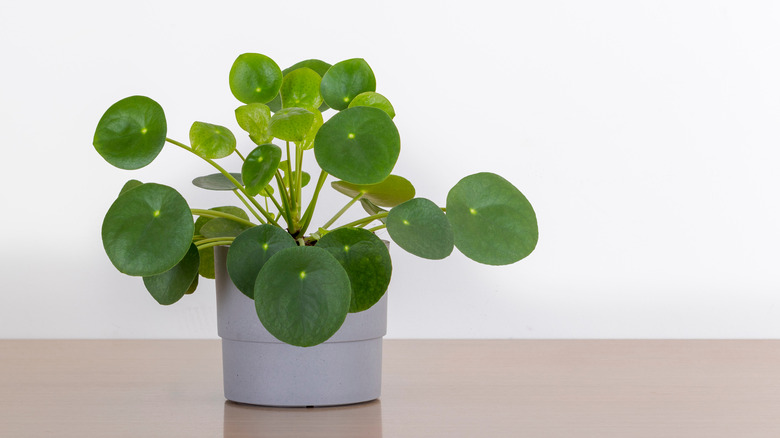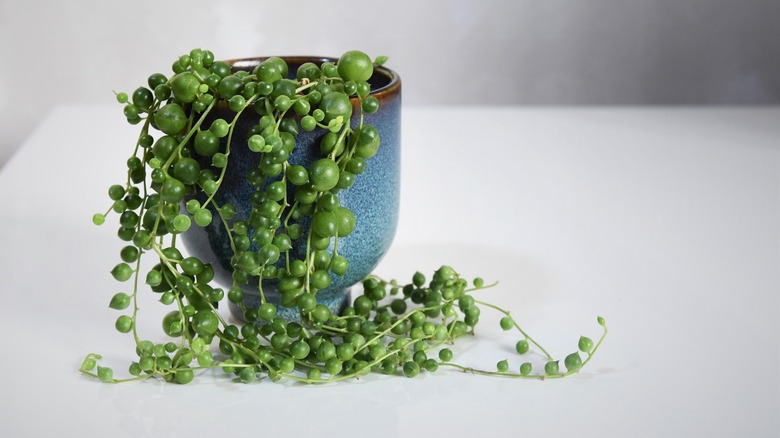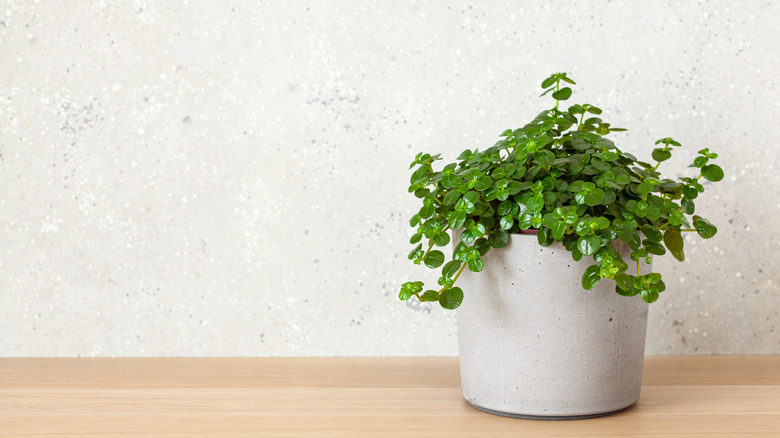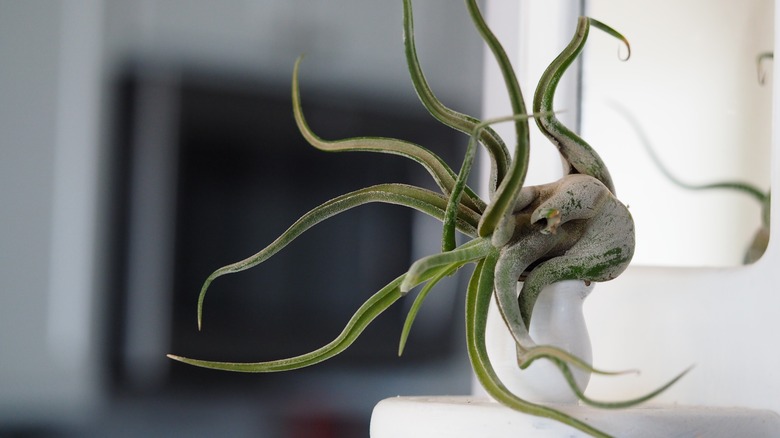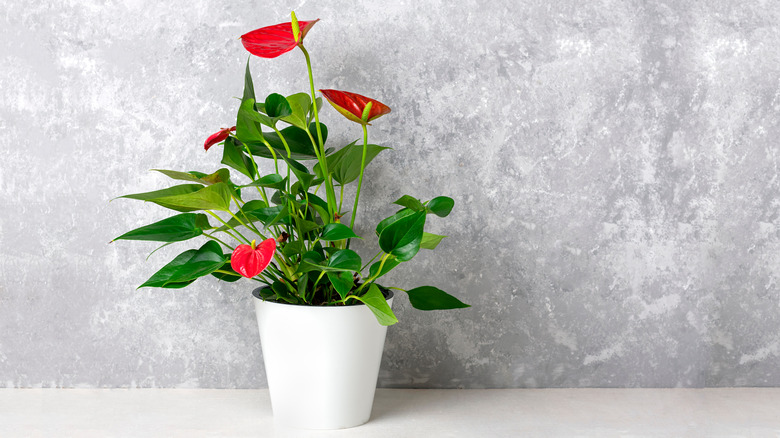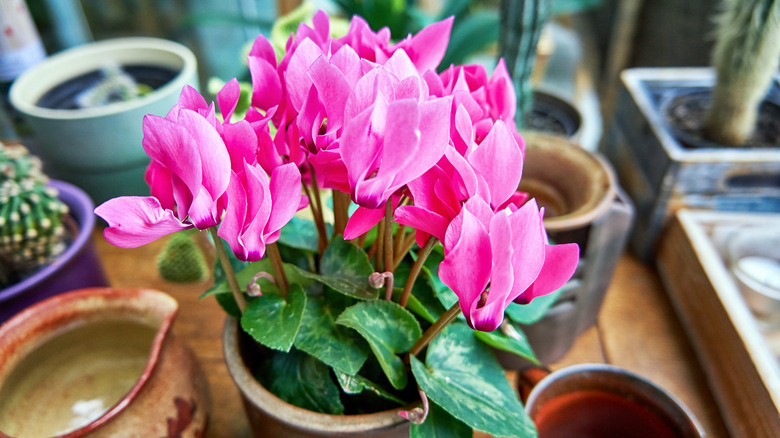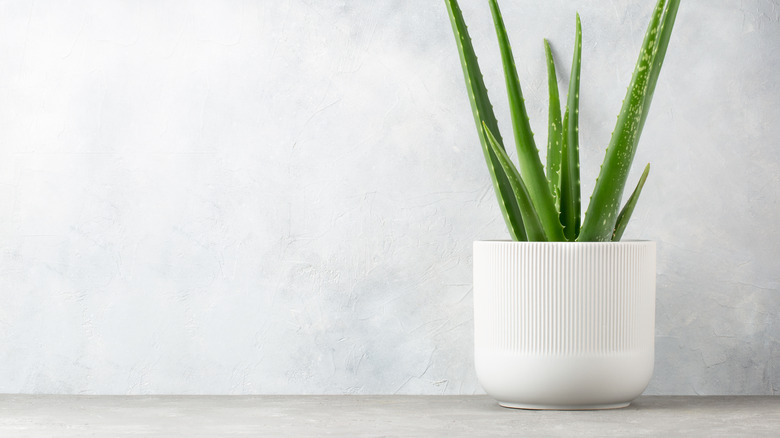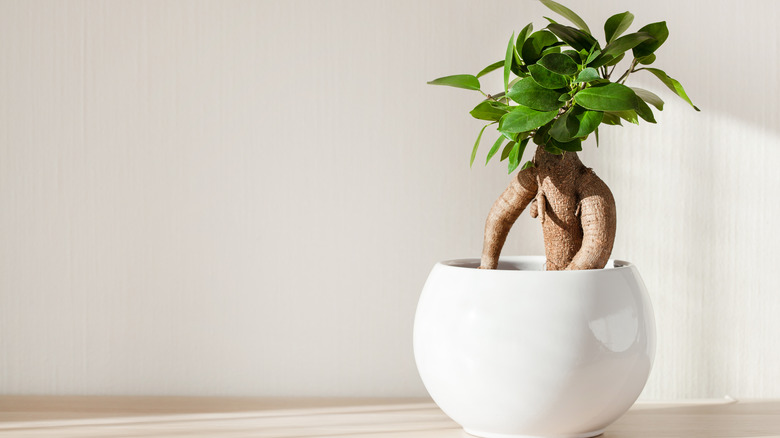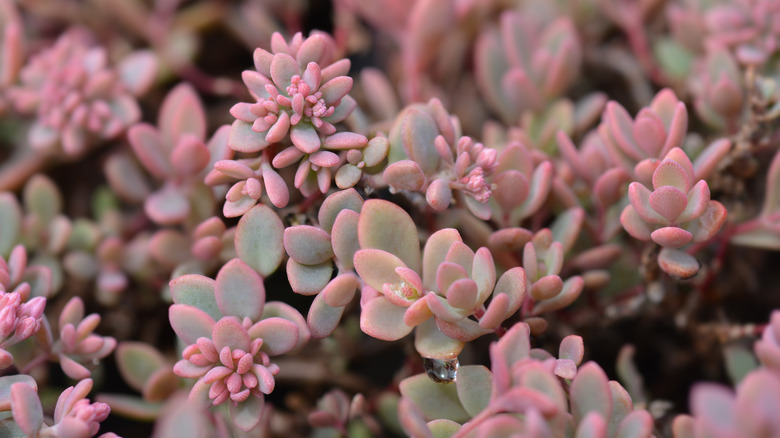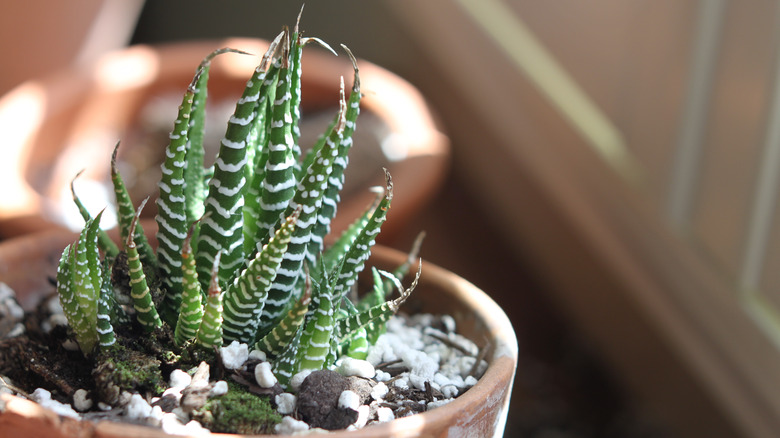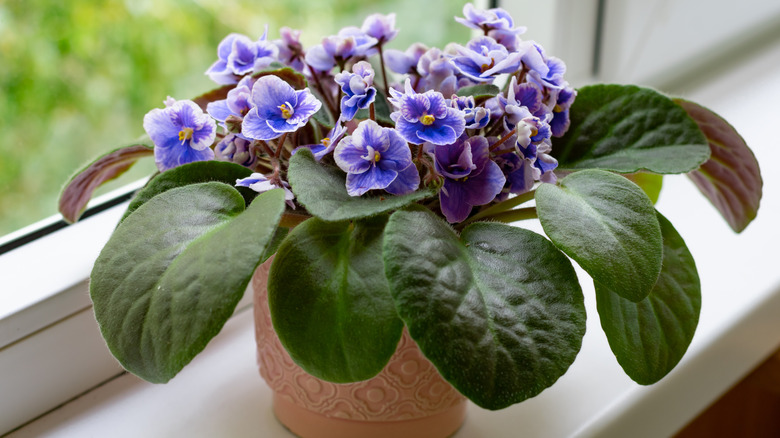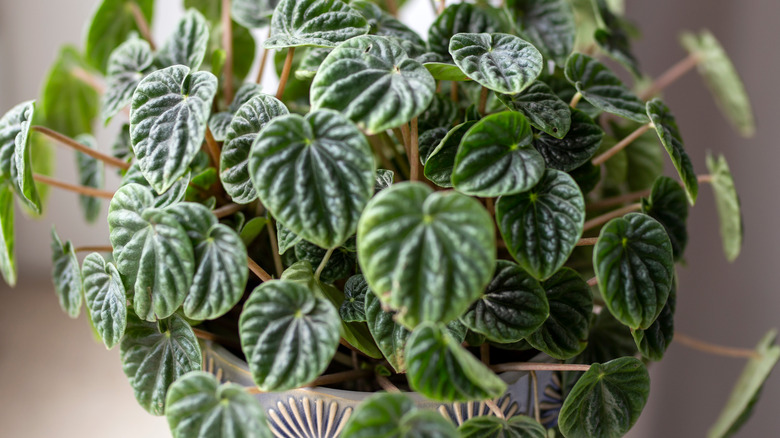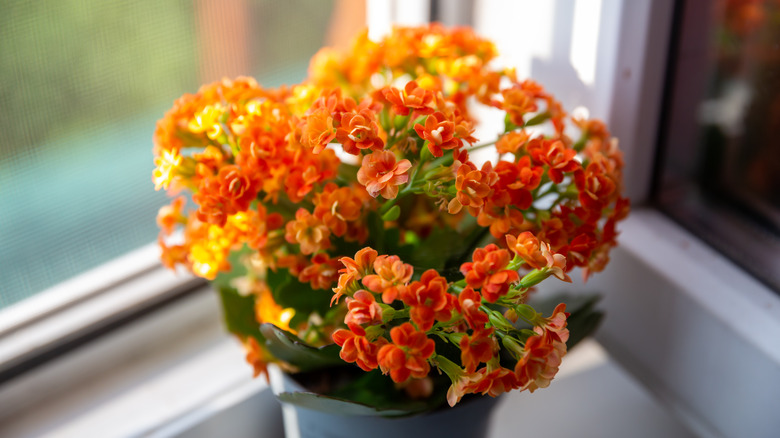22 Cute Houseplants That Will Stay Small Over The Years
It's difficult not to love houseplants. In the home, unique, tropical, and foliage-filled plants bring gardeners joy, productive energy, and sometimes cleaner air to breathe, as per Piedmont. However, many of the best and most popular houseplants like palms, philodendrons, and some ficus species can grow much too large for a studio apartment or tiny home. If you live in a cozy yet cramped space, you don't have to live without indoor plants. Though, you will likely have to sacrifice the Monstera plant you've had your eye on. Luckily, there are many other leafy and flowering species that you can choose from that grow less than 3 feet high. In fact, many of them only grow to become a few inches tall.
Houseplants such as Persian cyclamen, bonsai trees, and air plants are extremely different when you consider their care requirements, growth habits, and appearance. Despite this, they do share the quality of growing slowly and relatively short. In addition to these great plants, keep reading to take a look at our collection of 22 small houseplants that we're sure you'll love.
1. Living stones
Living stones (Lithops spp.) are an extremely low-maintenance genus of succulents that never grow larger than 3 inches tall. If you are looking for an itty-bitty houseplant, pick up one or more of these for yourself. Mountain Crest Gardens lets us know that living stones need direct sunlight and mostly dry soil to survive.
Bloom Season: Fall
USDA Growing Zone: 10 to 11
Growing Conditions: Bright direct light
Soil Type: Rocky and well-draining potting mix
Size: Less than 3 inches tall
2. Pincushion cactus
Pincushion cacti (Mammillaria spp.) have become one of the most well-known genera of cacti grown at home. They are easily recognized by their halo of flowers that appear in the summer and fall, and their cylindrical bodies that are covered in short spines. North Carolina State Extension suggests growing yours in extremely well-draining soil amended with pebbles or coarse sand.
Bloom Season: Summer and fall
USDA Growing Zone: 10 to 11
Growing Conditions: Bright indirect light
Soil Type: Well-draining potting mix
Size: 1 inch tall to 1 foot tall
3. Maidenhair fern
The maidenhair fern (Adiantum pedatum) is frequently touted to plant lovers as a shade-loving, easy-to-care-for indoor or outdoor plant. Yet, it is rarely mentioned that it is a small-growing fern. Unlike the Boston fern or the western sword fern, this one never grows much larger than 2 feet tall, as per Prairie Nursery. You can grow this lush plant indoors without worrying about it becoming too big.
Bloom Season: Summer
USDA Growing Zone: 3 to 8
Growing Conditions: Medium to low indirect light
Soil Type: Well-drained potting mix
Size: 1 to 2 feet tall
4. Aluminum plant
Aluminum plants (Pilea cadierei) are best known for their incredible foliage that looks as if it were painted with silver. Missouri Botanical Garden makes it clear that the herbaceous perennial is best used as a houseplant because it needs very warm temperatures, little sunlight, and high humidity to survive.
Bloom Season: Rarely flowers indoors
USDA Growing Zone: 11 to 12
Growing Conditions: Bright or medium indirect light
Soil Type: Well-drained potting mix
Size: 9 to 12 inches tall and 6 to 9 inches wide
5. Baby toes succulent
The baby toes succulent (Fenestraria rhopalophylla) is named for its stubby growth habit and finger-like foliage, as told by Mountain Crest Gardens. Like many succulent plants, this one must be positioned in bright indirect light. With proper care, the adorable baby toes plant will stay compact and even produce pretty white or yellow flowers at the beginning of the growing season.
Bloom Season: Winter to spring
USDA Growing Zone: 10 to 11
Growing Conditions: Bright indirect light
Soil Type: Coarse and well-draining potting mix
Size: Less than 3 inches tall
6. Dwarf papyrus
Dwarf papyrus (Cyperus papyrus) is one species in a large genus of grass-like plants. Typically, papyrus grows along streams and lakes where its roots stay wet. When grown in a container, and kept small, you'll notice that the foliage looks like yellow and green fireworks. The ornamental dwarf papyrus is perfect for growing as a houseplant, but it will need to be pruned regularly, says the University of Wisconsin-Madison.
Bloom Season: Summer
USDA Growing Zone: 9 to 12
Growing Conditions: Bright indirect light
Soil Type: Consistently moist growing medium
Size: 2 to 3 feet tall
7. Juniper bonsai
Juniper bonsai trees (Juniperus virginiana) are very challenging to grow if you have little experience with bonsai. However, it is also a rewarding task that brings many gardeners a lot of joy. Likely, your juniper tree will need to be pruned about once per month to train its habit in the growing season. Jackson and Perkins proposes keeping this tiny tree in a warm room where it will not be subjected to cold and dry drafts or frost.
Bloom Season: Spring
USDA Growing Zone: 2 to 9
Growing Conditions: Bright indirect light
Soil Type: Well-draining potting mix
Size: 6 to 12 inches tall
8. Hoya heart plant
Hoya heart plants (Hoya kerrii) are an unusual species of heart-leafed vining plants that rarely grow taller than 4 feet, especially when they are cared for properly. A very slow grower, it will take some time before it becomes attached to a support to vine upward, as said by Logee's.
Bloom Season: Summer
USDA Growing Zone: 10 to 11
Growing Conditions: Bright direct or indirect light
Soil Type: Well-draining potting mix
Size: 2 to 4 feet tall
9. Jade plant
The jade plant (Crassula argentea) is a familiar houseplant that features thick dark green leaves. It often reaches no taller than 3 feet tall. However, gardeners can choose to leave their jade plant in the same pot and allow it to become root bound, says the University of Florida. It can survive this way for years and will stay smaller and easier to manage.
Bloom Season: Spring
USDA Growing Zone: 10 to 11
Growing Conditions: Bright, medium, or low indirect light
Soil Type: Well-draining potting mix
Size: 1 to 3 feet tall and wide
10. Chinese money plant
The Chinese money plant (Pilea peperomioides) is meant for a window sill garden, according to Logee's. This money-attracting plant simply needs bright light, well-draining potting soil, and little water to grow. With the right type of care, the Chinese money plant will provide you with beautiful, circular leaves and hopefully some good fortune.
Bloom Season: Winter
USDA Growing Zone: 10 to 11
Growing Conditions: Bright to medium indirect light
Soil Type: Well-draining potting mix
Size: 8 to 12 inches tall
11. String of pearls
The string of pearls plant (Curio rowleyanus) is recommended to home gardeners again and again for its easy care needs and unique foliage. The plant once belonged to the ragwort family, which includes cape ivy and common groundsel, as per the University of Wisconsin-Madison. However, it has recently been moved to the Curio genus, which is home to many evergreen succulents with similar growth habits.
Bloom Season: Summer
USDA Growing Zone: 9 to 11
Growing Conditions: Bright indirect light
Soil Type: Well-draining potting mix
Size: 1 to 3 feet long
12. Baby tears plant
The baby tears plant (Pilea depressa) is much livelier than its name suggests. This leafy houseplant is characterized by vining stems that show off small, scalloped leaves and white flowers, as described by Sweet Leaf Nursery. Though the baby tears plant needs warm temperatures and plenty of water, it's not quite as picky about the soil it's planted in nor the light it receives.
Bloom Season: Spring
USDA Growing Zone: 10 to 11
Growing Conditions: Bright indirect light
Soil Type: Evenly moist and well-draining potting mix
Size: 3 to 6 inches tall
13. Air plant
Air plants (Tillandsia spp.) are among the best epiphytes you can grow indoors if you have little time to care for your plants. Penn State Extension mentions that the Tillandsia species has grown in popularity over the last few years. Most often, they stay very small and grow slowly. It's difficult to find an air plant larger than 1 foot tall or wide.
Bloom Season: Only bloom once
USDA Growing Zone: 10 to 11
Growing Conditions: Bright indirect sunlight
Soil Type: Does not grow in soil
Size: 2 to 12 inches tall
14. Anthurium
Anthurium (Anthurium andraeanum), or the flamingo flower, is an attractive indoor plant that may grow somewhat tall, but not wide. RHS describes the plant as an evergreen perennial, which boasts bright flowers and foliage all year long. The flowers of the plant are actually spathes with a light yellow spadix in the center, and not true flowers, though they look very similar.
Bloom Season: Year-round
USDA Growing Zone: 11 to 12
Growing Conditions: Bright to medium light
Soil Type: Well-draining potting mix
Size: 4 to 20 inches tall and wide
15. Persian cyclamen
Persian cyclamen (Cyclamen persicum) is a beautiful low-growing flowering plant. Even when it isn't in bloom, the evergreen habit of its leaves makes it look like it is intentionally grown for its foliage. According to the University of Wisconsin-Madison, Persian cyclamen has many cultivars that are equally impressive with larger flowers, patterned leaves, and relatively simple care needs.
Bloom Season: Winter and spring
USDA Growing Zone: 9 to 11
Growing Conditions: Medium to low indirect light
Soil Type: Moist and well-draining potting mix
Size: 6 to 9 inches tall
16. Aloe vera
Aloe vera (Aloe barbadensis) is frequently grown as a houseplant for good reason. It boasts many attractive features such as its healing gel, thick evergreen stems, and simple care requirements. On top of that, it also never grows much larger than 2 feet tall when kept indoors. The University of Florida advises gardeners to provide this succulent species with a well-draining potting mix and some water.
Bloom Season: Late winter to spring
USDA Growing Zone: 8 to 11
Growing Conditions: Bright to low indirect light
Soil Type: Well-draining potting mix
Size: Up to 2 feet tall
17. Chinese banyan bonsai tree
The Chinese banyan bonsai tree (Ficus microcarpa) can be difficult to grow, but many gardeners enjoy the challenge. In order to keep it small, you must prune it often so that it can maintain an attractive shape. North Carolina State Extension suggests this species for beginners who are unfamiliar with the process of growing and caring for a bonsai tree.
Bloom Season: Rarely flowers indoors
USDA Growing Zone: 9 to 11
Growing Conditions: Bright indirect light
Soil Type: Well-draining potting mix
Size: 40 feet tall outdoors, smaller when grown indoors
18. Azure stonecrop
The azure stonecrop (Hylotelephium cyaneum 'Sakhalin'), also simply called 'Sakhalin', is a perennial succulent with fleshy foliage that can appear in shades of green, pink, purple, and red. In the summer and fall, as told by RHS, this stonecrop species also boasts star-shaped pink flowers. The Hylotelephium species can spread to create a relatively large mat, however, it should never grow taller than 4 inches tall.
Bloom Season: Summer to fall
USDA Growing Zone: 4 to 9
Growing Conditions: Bright direct or indirect light
Soil Type: Well-draining potting mix
Size: Up to 4 inches tall
19. Zebra plant
Zebra plants (Haworthiopsis attenuata) are a species of succulents that are known for their spotted and fleshy leaves. To grow, they need very little indirect sunlight and water. A virtually disease-free plant, Haworthia is extremely difficult to kill and it doesn't grow too large, as indicated by Mountain Crest Gardens. It is the perfect houseplant that will show little change over several years.
Bloom Season: Summer
USDA Growing Zone: 10 to 11
Growing Conditions: Medium to low indirect light
Soil Type: Well-drained potting mix
Size: 3 to 5 inches tall
20. African violet
African violets (Saintpaulia ionantha) are well-known for their ability to grow and flower indoors. This heat-loving plant, native to Tanzania, is still attractive when it isn't in bloom due to its large, dark green, and hairy foliage. However, the flowers are almost always in bloom as long as the plant's care is adequate, says Missouri Botanical Garden.
Bloom Season: Flowers freely
USDA Growing Zone: 11 to 12
Growing Conditions: Indirect medium to low light
Soil Type: Loose, highly organic potting medium
Size: 6 to 9 inches tall
21. Ripple peperomia
Ripple peperomia (Peperomia caperata) is also referred to as emerald ripple peperomia, ivy-leaf peperomia, and metallic peperomia, as pointed out by North Carolina State Extension. The plant is known for its heart-shaped leaves that are ripped and colorful. Its foliage may appear different depending on the cultivar that you choose. Some of the most popular varieties are 'Burgundy', 'Rosso', and 'Variegata'.
Bloom Season: Fall to summer
USDA Growing Zone: 11 to 12
Growing Conditions: Bright to medium indirect light
Soil Type: Well-draining potting mix
Size: 6 to 8 inches tall and 6 to 24 inches wide
22. Flaming Katy
Flaming Katy (Kalanchoe blossfeldiana) is a flowering succulent plant known for its thick, scalloped green leaves and flowers that bloom in a range of different colors such as yellow, red, pink, and orange, as explained by Clemson Cooperative Extension. In a sunny window, the flaming Katy plant should thrive and bloom each spring.
Bloom Season: Early spring
USDA Growing Zone: 10 to 12
Growing Conditions: Bright indirect light
Soil Type: Well-draining potting mix
Size: 8 inches to 1 foot tall
